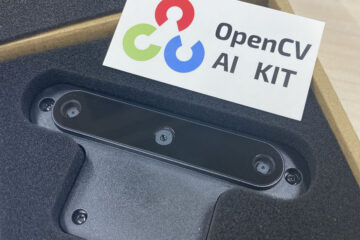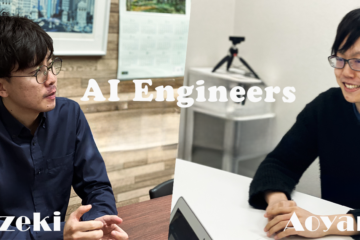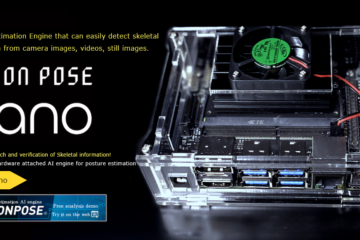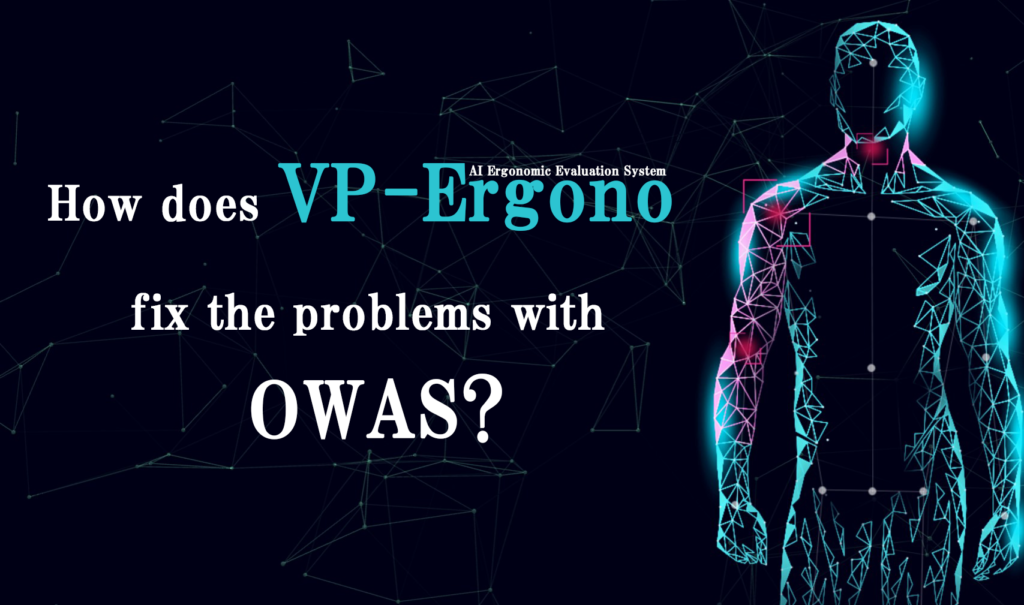
Work posture evaluation is essential for examining health problems that can be caused by poor posture, such as lower back pain and neck, shoulder, and arm disorders. In the modern workplace, ensuring the health and safety of employees is a top priority for organizations worldwide. Among the various factors influencing employee health, proper work posture stands out as crucial in preventing musculoskeletal disorders and enhancing overall productivity.
One widely recognized method in this domain is the Ovako Working Posture Analysis System (OWAS). However, while OWAS provides valuable insights, it also has some challenges that can hinder its effectiveness in certain situations. To address these challenges, our company NEXT-SYSTEM, has developed an AI ergonomic evaluation software VP-Ergono. It utilizes AI to analyze the load placed on the body of individuals captured by cameras in real-time during work or anykind of activities.
This blog will explore the weaknesses of OWAS, and introduce VP-Ergono as a potential solution to address these challenges and ensure optimal workplace ergonomics.
Understanding OWAS
Developed in the 1970s, OWAS is a method for observing and classifying work postures based on four key body segments: back, arms, legs, and load. Each segment receives a score based on its position (bent, twisted, etc.) and the weight of any load being handled, indicating the overall postural risk associated with a task.
Work postures in OWAS are independently categorized, coded, and evaluated across four levels, guided by the Action Category (AC) judgment.
Please find an example of an OWAS worksheet attached below:
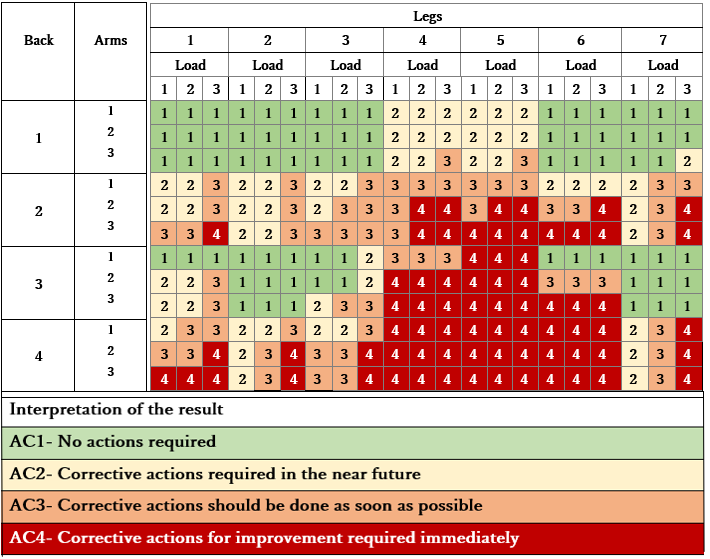
Although OWAS is widely recognized internationally for its ability to assess full-body postures and set evalaution standards, there have been challenges in posture identification observation.
As previously mentioned, the OWAS method labels each body part with a code, comprehensively judges it, and then provides the degree of load placed on the body, as well as indicating the extent of improvement required.
However, since this classification is based on human perception, it presents the following challenges.

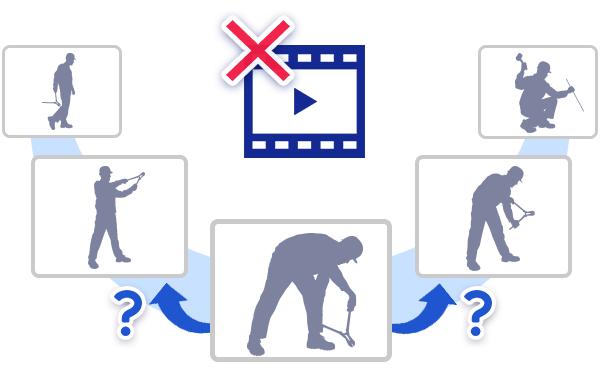
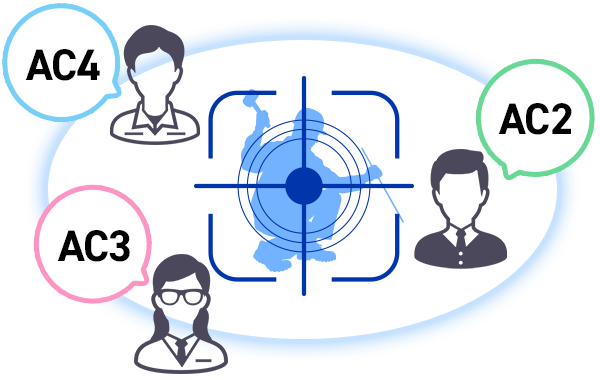
- Time-consuming and labor-intensive
- Judgment is based on just one scene, so it is not possible to evaluate the preceding and following motion
- Results of the analysis may differ based on the evaluator’s know-how and perception
Fortunately, VP-Ergono offers solutions to overcome these challenges. Please continue scrolling to learn more about how VP-Ergono addresses these challenges and enhances the effectiveness of postural analysis.
Introducing VP-Ergono & how it solves All of OWAS’ Problems
Now, let’s talk about the game changer: VP-Ergono. This AI superhero utilizes video footage to analyze your posture in real time. Yes, you read that right! In Real-Time.
VP-Ergono is the latest load analysis software that automatically analyzes burden on a human body caused by various movements and postures, allowing visualization of graphs and acquisition of numerical data. By simply loading video footage into the program, the AI quantitatively and automatically evaluates posture, eliminating subjective interpretations which have plagued the OWAS method.
To address the previously mentioned challenges of the OWAS method, VP-Ergono performs the following evaluations.
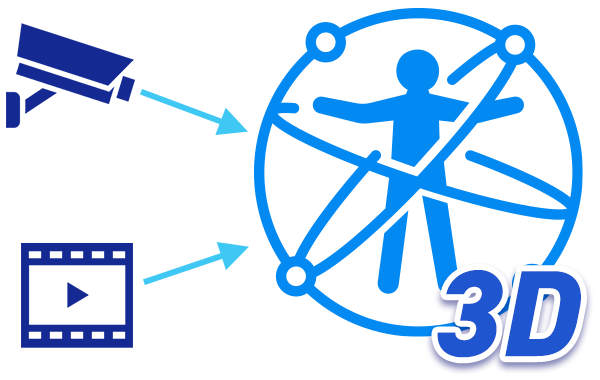
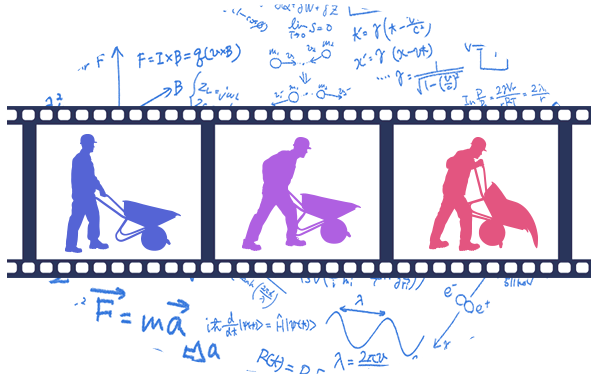
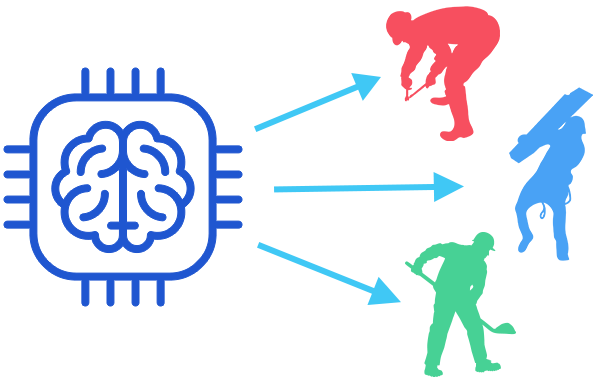
- 3D analysis of the entire skeleton from videos and camera images
- Analysis focused on ‘movement’ while accommodating changes in skeletal coordinates over time
- Automatic and quantitative analysis by AI without human observer’s subjectivity
In Summary:
VP-Ergono employs 3D analysis of the entire skeleton using videos and camera images, enhancing efficiency and accuracy compared to OWAS method. Unlike OWAS, VP-Ergono focuses on movement, accommodating changes in skeletal coordinates over time. This allows for a comprehensive assessment of postures and motions throughout tasks. Additionally, VP-Ergono employs AI for automatic and quantitative analysis, removing the need for subjective human judgment. This guarantees consistency and objectivity in evaluations, reducing the variability observed in OWAS assessments.
Furthermore, if you already have your own ergonomics evaluation formula in the workplace, customization to suit your needs is also possible.
Features of VP-Ergono
No specialized equipment required, capable of analyzing prerecorded video and real-time footage!
VP-Ergono’s load analysis can analyze prerecorded video files and real-time camera footage. The skeletal and load data obtained from the analysis can be exported in CSV format, allowing you to use the data freely. Moreover, no specialized sensors or equipment are required. The significant feature is that load analysis can be performed using a standard webcam and PC. This means that implementation is relatively easy, and costs are kept low, making it accessible for various companies to adopt.
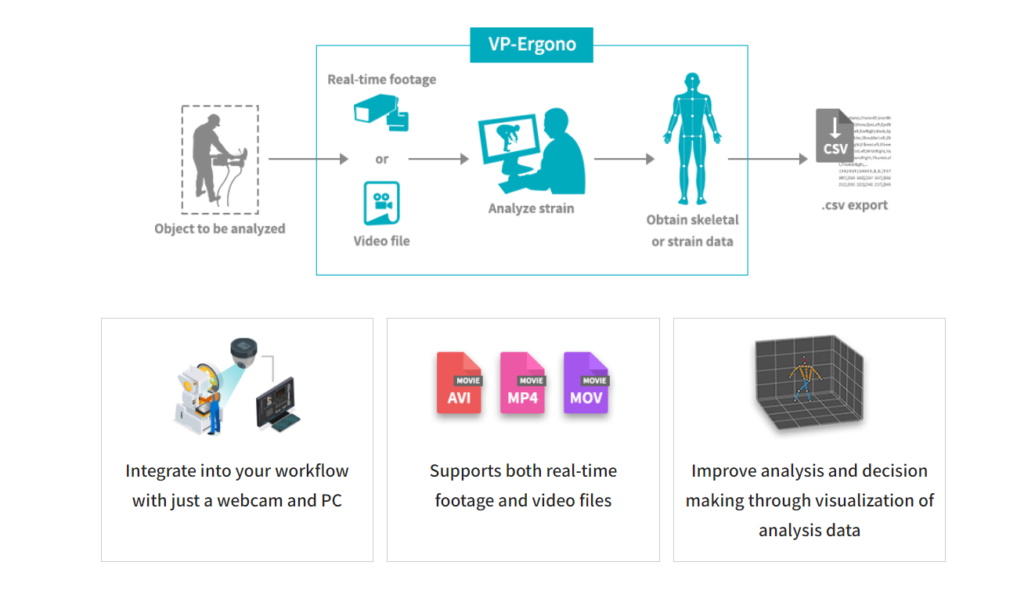
Usage scenarios
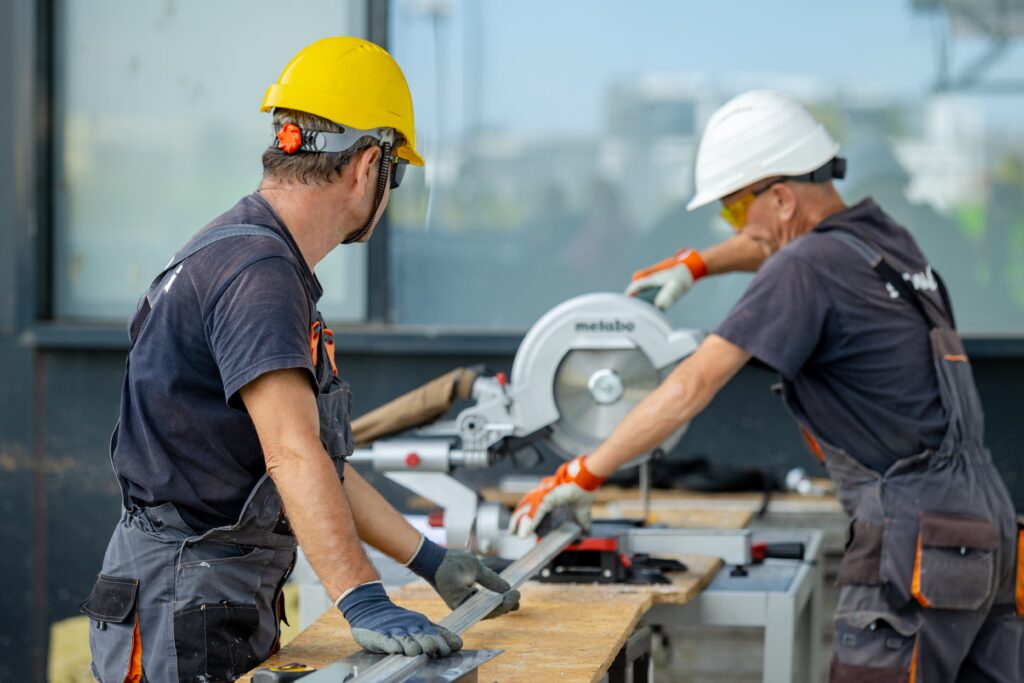
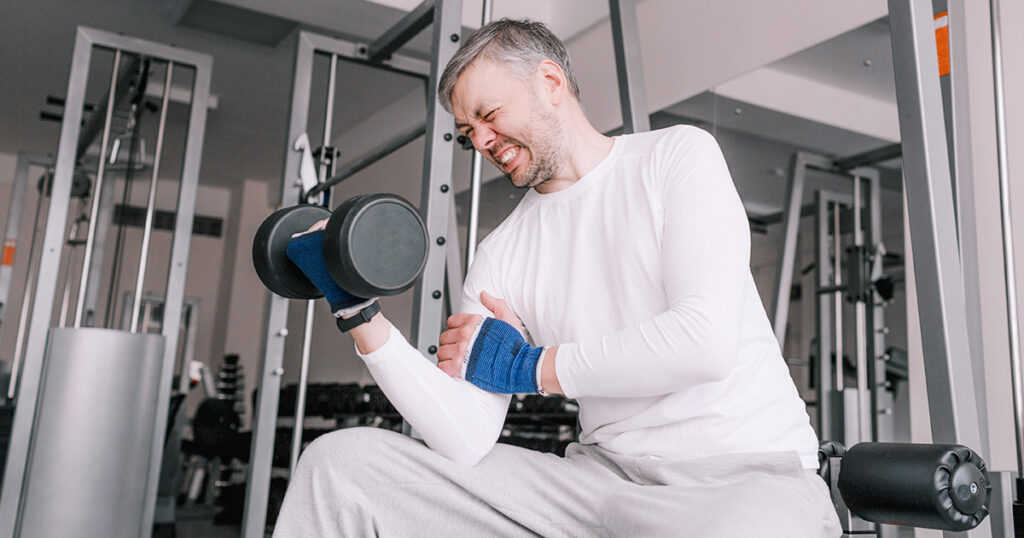
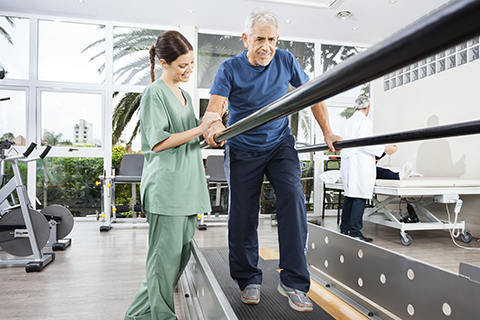
- Manufacturing Industry: To reduce work load on workers and maintain the health and safety of the workers
- Sports and Training: To analyze effective form and create a high-quality training schedule
- Rehabilitation and Nursing Care: To create optimal rehabilitation programs and improving health management
For more information, please check out the blog down below.
▼ VP-Ergono’s User Interface
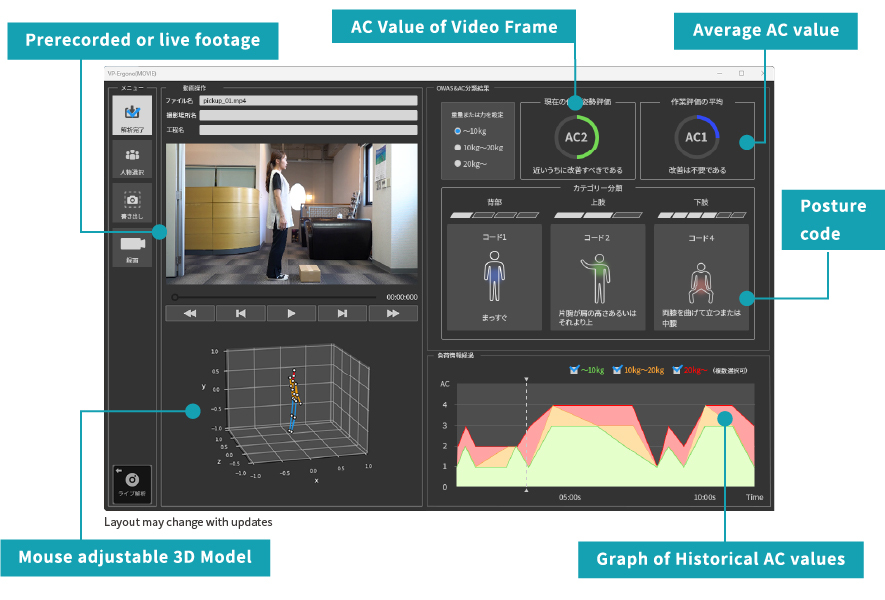
Human Body Load Analysis with VR
At Next System, in additon to AI, we have a wide range of development experience in cutting-edge technologies, such as latest XR technologies (VR/AR/MR). Therefore, we are capable of developing projects that combine AI with VR.
Furthermore, we also utilized VR to test body load analysis at an assembly line.
Conclusion
While the OWAS method has been valauble in assessing workplace ergonomics, it does have its challenges. VP-Ergono offers a comprehensive solution, representing a significant advancement in ergonomic analysis. It provides a versatile means to analyze human movement and posture without specialized equipment, paving the way for safer and healthier work environments.
In addition to VP-Ergono, our company has undertaken numerous AI developments in Pose Estimation, and has also developed an AI behavior analysis system called VP-Motion to analyze human behaviors and actions. Furthermore, we are committed to developing products aimed at promoting health and providing support for the elderly, considering the challenges of an aging society. Through leveraging the latest AI and IT technologies, we aspire to contribute to society by addressing the needs of the rapidly aging population.
Please do not hesitate to contact us at anytime.
You can also find us on Twitter, Facebook, Website, Youtube, & Linkedin.
